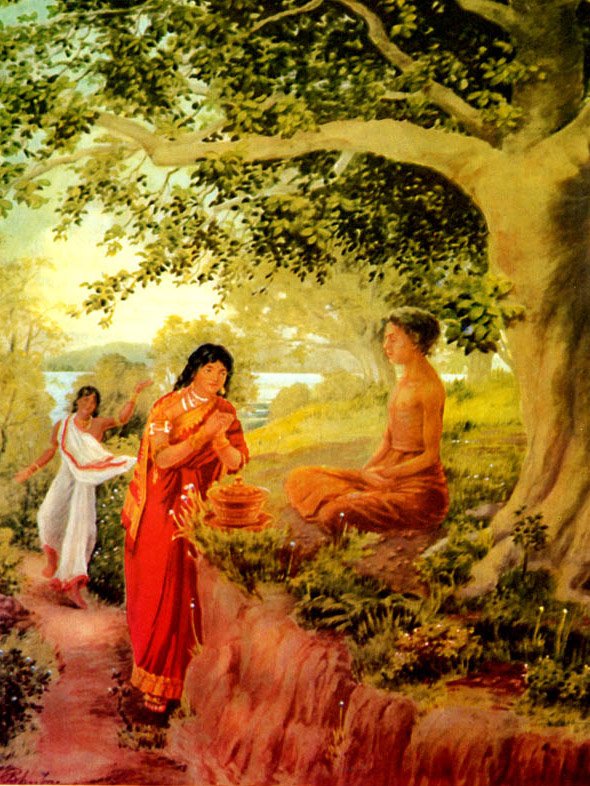Apadana commentary (Atthakatha)
by U Lu Pe Win | 216,848 words
This is the English translation of the commentary on the Apadana (Atthakatha), also known as the Visuddhajana-Vilasini. The Buddhist stories known as apadanas refer to biographies of Buddhas, Buddhist monks and nuns. They are found in the Pali Canon (Khuddaka Nikaya), which is the primary canon of Theravada Buddhism. Alternative titles: Visuddhaja...
Commentary on Biography of the thera Pañcahatthiya
Stanzas starting with Sumedho nāma Sumbuddho constitute the biography of the venerable thera Pañcahatthiya. This one also having done devoted service toward former Buddhas, accumulating meritorious deeds conducive towards escape from rounds of rebirth 9vaṭṭa), in this or that existence, was reborn in a family house at the time of the Glorious One Sumedha; on having attained the;age of intelligence, he lived holding clear faith in; the three gems. On that occasion they brought five handfuls of white lilies (uppala). He offered those five handfuls of lilies with reverence to the Glorious One Sumedha wandering about on the street. Thos five handfuls of lilies went and became a canopy in the sky, went together with Tathāgava even, providing a shade for Him. On seeing that phenomenon, he became pleasure-minded with his body permeated with zest (pīti), remembered that self-same meritorious deed as long as he lived, and having passed away thence, was reborn in the divine world. Subsequently. wandering about his rounds of rebirth oft and on, he was reborn in a family house when this Buddha arose. One his having attained the age of intelligence, pious faith sprang up in him; consequently, he became a monk, developed clear insight (vipassanā), and not long afterwards even, became an arahat. He became well-known as the thera Pañcahatthiya, by the name of the meritorious deed done by him.
77. Having recollected his own former deed, he uttered this stanza starting with Sumedho nāma Sambuddho in order to make manifest the former deed done and seen by him with knowledge under his very eyes. There, Sumedho, (good knowledge) that Glorious One, the selfenlightened Buddha Sumedha, to whom there was good intelligence, and such kinds of knowledge as: proper penetration into the four noble truths, analytical knowledge and so on; antarāpaṇe (inside the shopping centre) he went within the street; thus, is the connection. Okkhittacakkhu (down-cast eyes) thrown down eye-sight; mitabhāṇī (measured speaker) habituated speaking having known the limit; having known the measurement, he preached the truth (dhamma); thus, is the meaning. Ther rest is but easily comprehensible.
The commentary on the biography of the thera Pañcahatthiya has ended.
